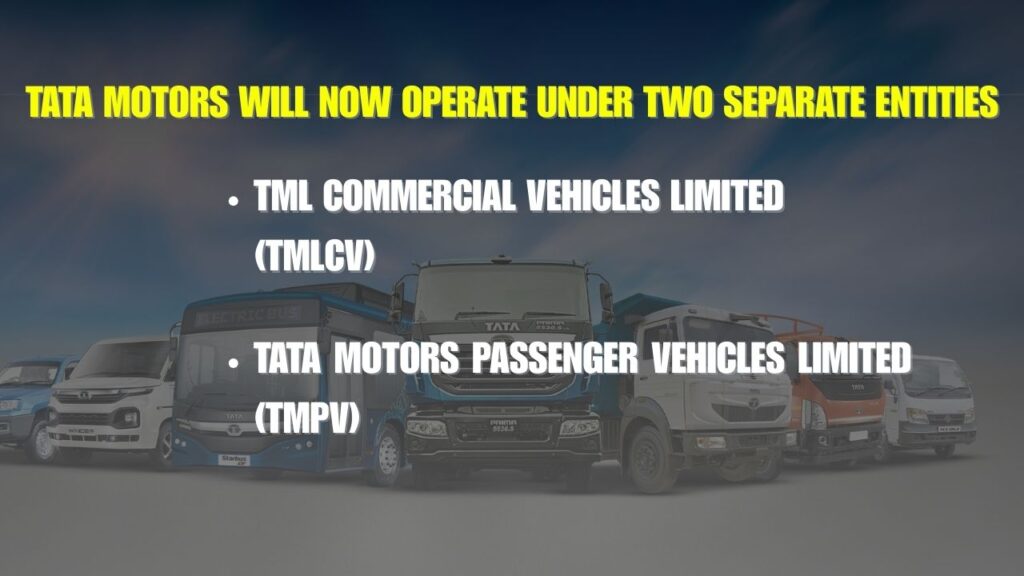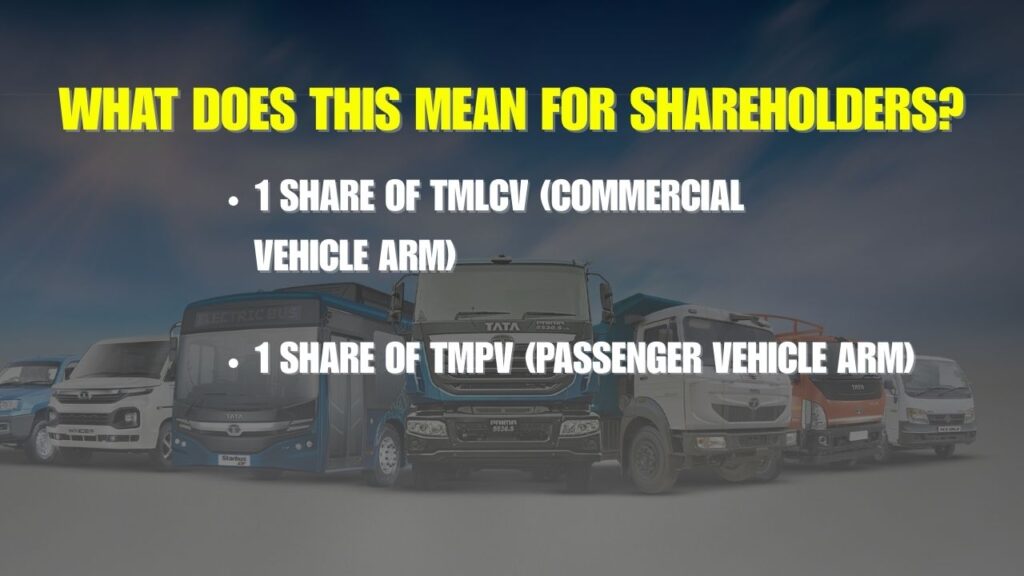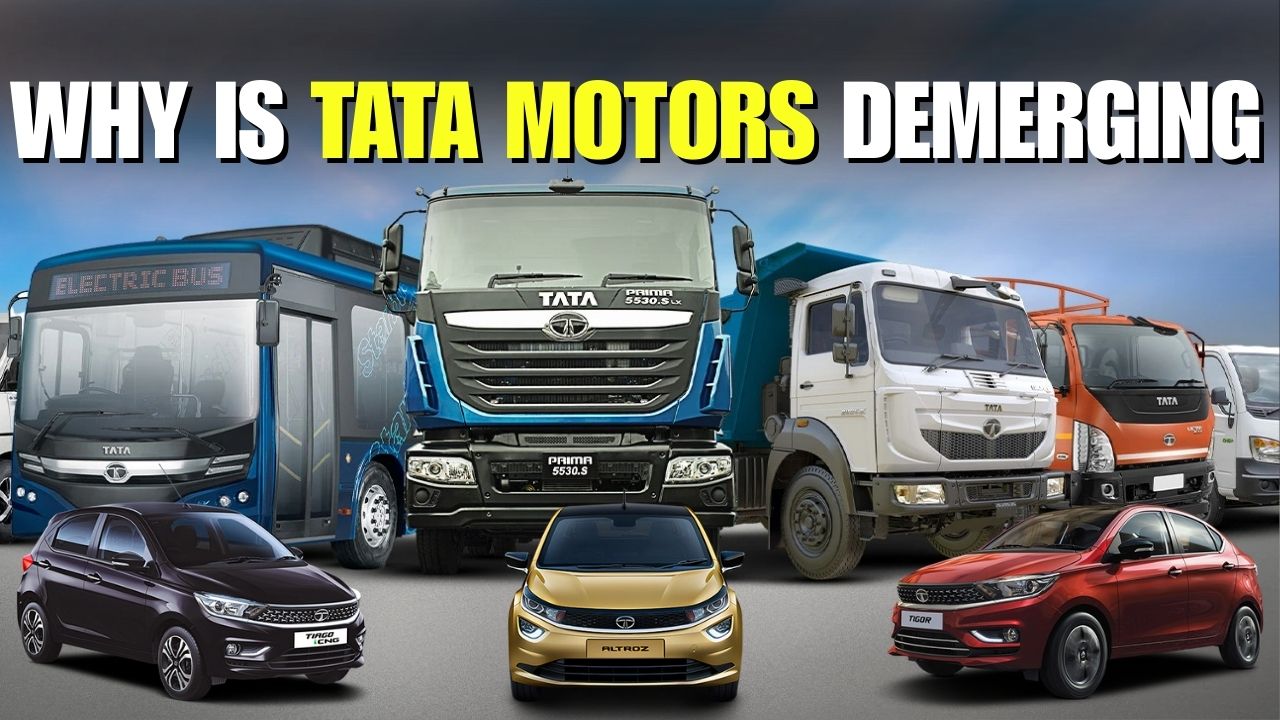Tata Motors, one of India’s most iconic automobile manufacturers, is embarking on a transformative journey. After nearly eight decades of operating as a unified business entity, the company has announced a major demerger; separating its passenger vehicle (PV) and commercial vehicle (CV) divisions into independent units. Let’s dive into the details and explore why Tata Motors New Strategic Split grab attention in the automotive world.
This bold decision marks a turning point in Tata Motors’ illustrious history and aligns with the broader restructuring plans led by Tata Sons Chairman Natarajan Chandrasekaran to simplify the Tata Group’s overall business structure.
Table of Contents
Why is Tata Motors Demerging?
For years, Tata Motors has built everything from small passenger cars like the Indica, Nexon, and Altroz, to heavyweight commercial vehicles including buses and massive trucks that keep India’s logistics running. The brand also owns global luxury icon Jaguar Land Rover (JLR).
But as the automotive industry evolves, Tata Motors realized that a one-size-fits-all approach no longer works. Different segments have different challenges, technologies, and customer needs. So, in 2024, the company announced its decision to demerge its PV and CV businesses.
This move is seen as a strategic reorganization, enabling both arms to operate with greater focus, agility, and accountability.
Read Also: How Tata Curvv Stole the Spotlight in IPL 2025
Here’s How the Tata Motors Demerger Will Work

Tata Motors will now operate under two separate entities:
TML Commercial Vehicles Limited (TMLCV):
This new company will take over the commercial vehicle business, including:
- Trucks & buses
- Manufacturing facilities
- Assets & liabilities
- Employees & related investments
Tata Motors Passenger Vehicles Limited (TMPV):
The existing Tata Motors framework will continue to manage:
- Jaguar Land Rover (JLR)
- Passenger vehicles
- Electric vehicles (EVs)
What Does This Mean for Shareholders?

To make things simple and equitable, Tata Motors has adopted a 1:1 share ratio for the demerger. This means:
- For every 1 share of Tata Motors Ltd held, investors will receive:
- 1 share of TMLCV (Commercial Vehicle arm)
- 1 share of TMPV (Passenger Vehicle arm)
Both shares will carry a face value of ₹2, ensuring a seamless transition for existing shareholders. This structure aims to unlock greater value and provide investors with more clarity on each business segment’s performance and growth trajectory.
What Are the Strategic Benefits of This Demerger?
- Focused Growth Strategies:
The PV and CV businesses operate in very different market environments. The demerger allows each entity to tailor strategies suited to their markets whether it’s electrification, autonomous tech, or fleet modernization. - Better Operational Efficiency:
With independent management teams, each company can optimize operations, manufacturing, and innovation pipelines without cross-segment limitations. - Attracting Targeted Investments:
The split makes it easier to attract investors interested in either commercial or passenger vehicles, especially those focusing on EV growth, sustainable mobility, or logistics infrastructure. - Clearer Financial Reporting:
Shareholders and analysts will now be able to see the financials of each division independently, leading to improved transparency and valuation.
A New Era for Tata Motors
Tata Motors’ demerger isn’t just a corporate restructuring move it’s a repositioning for the future. As India rapidly transitions toward electric mobility, and global competition intensifies, Tata Motors aims to be more responsive and agile.
By allowing its passenger and commercial vehicle divisions to chart their own paths, Tata Motors is laying the foundation for long-term value creation, innovation, and leadership in both segments.
Important Timeline: July to October 2025
The company has shared key dates for this major transition:
- Appointed Date: July 1, 2025
- Expected Effective Date: October 1, 2025
This gives stakeholders a clear roadmap and timeline for the completion of the demerger process.
Final Thoughts on Tata Motors New Strategic Split After 78 Years
Tata Motors New Strategic Split After 78 Years is not just about corporate restructuring it’s a forward-looking move aimed at long-term value creation, technological agility, and market leadership in a rapidly changing industry.
With separate teams, focused goals, and a strong parent group, TMLCV and TMPV are well-positioned to thrive independently. India’s automotive giant is entering a new chapter and it’s one worth watching.

